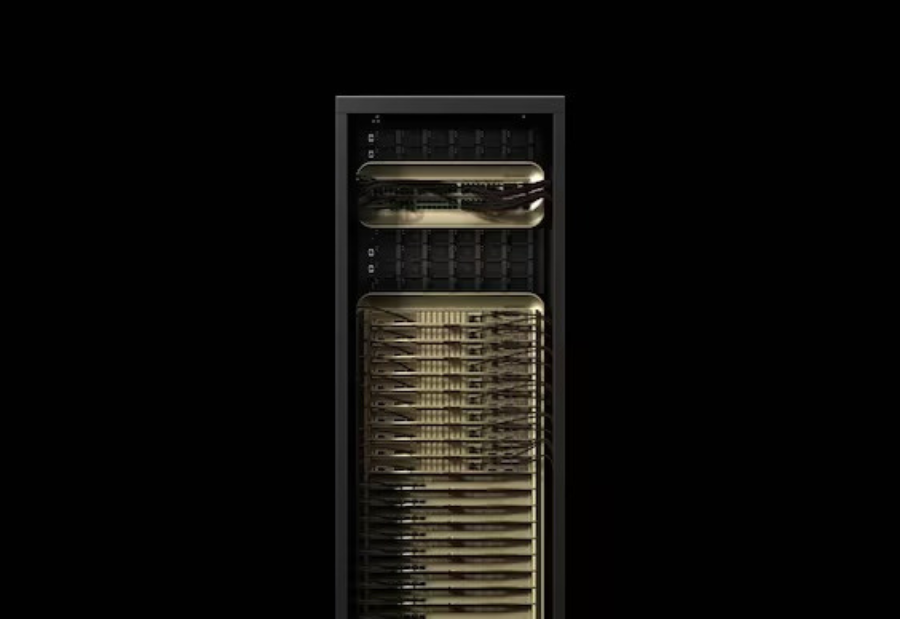Jensen Huang, the CEO of Nvidia, introduced a new range of AI superchips during the company’s annual GTC conference in San Jose, California. The purpose of these chips is to create and execute artificial intelligence (AI) models. Highlights included the introduction of a new next-generation graphics chip family called Vera Rubin, which is anticipated to debut in 2026, and the Blackwell Ultra processors, which will begin delivering later this year. The Vera Rubin system will come with a new GPU architecture dubbed Rubin, after the renowned astronomer, and Nvidia’s first custom-built CPU, called Vera.
Nvidia’s revenues have more than doubled since the emergence of AI tools like OpenAI’s ChatGPT in late 2022. This is because the company’s massive GPUs have become essential tools in the training phase of AI research. Nvidia’s CPUs are essential to the AI operations of several large cloud providers, including Microsoft, Google, and Amazon. These businesses are anticipated to keep spending billions on data centers powered by Nvidia as the AI growth isn’t slowing down. Indeed, Google and Microsoft announced plans to collaborate with Nvidia to fuel their own artificial intelligence at the GTC event on Tuesday.
“This last year is where almost the entire world got involved,” Huang said, highlighting how AI demand has rapidly accelerated.
The Blackwell Ultra chips are made to operate more quickly and efficiently. According to Nvidia, these chips will enable cloud service providers to provide high-end AI services, especially for real-time applications and other jobs requiring fast reactions. In comparison to Nvidia’s previous version, known as Hopper, the company claims that the new processors might let suppliers generate up to 50 times more income.
There will be two variants of the Blackwell Ultra: the GB300, which will be coupled with an Nvidia Arm CPU, and the B300, which will just have the GPU. Additionally, there will be rack versions that house 72 Blackwell chips and bigger models that fit eight GPUs onto a single server blade.
Vera Rubin Details of the Rubin chips were also disclosed by Nvidia. Rubin can more than quadruple the performance of the present Blackwell chips during inference, reaching up to 50 petaflops when combined with the Vera CPU. Rubin will also support up to 288 gigabytes of rapid memory, which is a crucial need for AI developers.
Nvidia will now handle mixed chip units differently, which is a significant move. When Nvidia merged two processors into one device, it was still referred to as a single GPU. However, with Rubin, each superchips will be considered an independent GPU if two or more are coupled. In 2027, Nvidia will also introduce a “Rubin Next” chip that will significantly improve performance by combining four GPUs.
Nvidia DGX Spark and DGX Station
Nvidia also unveiled new AI-focused desktops and laptops, including the DGX Spark and DGX Station, in addition to processors. Large AI models like Llama or DeepSeek are designed to operate on these devices. Additionally, the firm unveiled updates to its networking technology, which connects hundreds or even thousands of GPUs to function as a single unit, and Dynamo, a suite of tools meant to help consumers get more out of their Nvidia-powered systems.
Nvidia also addressed investor worries at the conference on DeepSeek R1, a Chinese AI model. There were concerns that DeepSeek may lessen the need for Nvidia processors. However, Huang claimed that because DeepSeek and other models can “reason,” they really need more processing power, and Nvidia’s new Blackwell Ultra processors are well-suited to tackle these more difficult AI jobs.
Also read: Viksit Workforce for a Viksit Bharat
Do Follow: The Mainstream formerly known as CIO News LinkedIn Account | The Mainstream formerly known as CIO News Facebook | The Mainstream formerly known as CIO News Youtube | The Mainstream formerly known as CIO News Twitter
About us:
The Mainstream formerly known as CIO News is a premier platform dedicated to delivering latest news, updates, and insights from the tech industry. With its strong foundation of intellectual property and thought leadership, the platform is well-positioned to stay ahead of the curve and lead conversations about how technology shapes our world. From its early days as CIO News to its rebranding as The Mainstream on November 28, 2024, it has been expanding its global reach, targeting key markets in the Middle East & Africa, ASEAN, the USA, and the UK. The Mainstream is a vision to put technology at the center of every conversation, inspiring professionals and organizations to embrace the future of tech.




